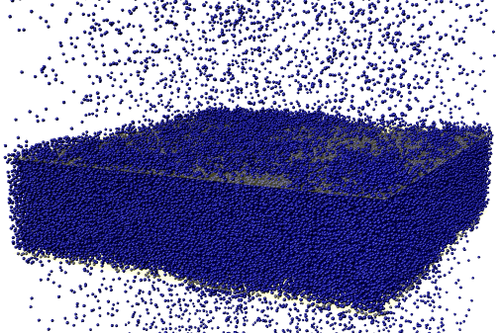Mesoscopic structure of liquid–vapour interfaces
Snapshot of a fluctuating liquid–vapour interface formed by 210,000 particles in a molecular dynamics simulation
At the molecular scale, the interfaces are broadened and roughened by thermally excited capillary waves, which lead to a small-wavenumber singularity in the interfacial structure factor accessible to X-ray scattering experiments. Our extensive simulations substantiate a non-constant effective surface tension, which develops a maximum at mesoscopic scales upon increasing temperature [4]. Liquid interfaces may further be decorated by nanoparticles or surfactant molecules, and future research shall address the question how appropriately sized particles couple statically and dynamically to this maximum with experimentally testable predictions.
[4] F. Höfling and S. Dietrich, Enhanced wavelength-dependent surface tension of liquid-vapour interfaces, EPL 109, 46002 (2015).



